Summary:
When fibers on boards that use the HXFP8240, HXFP8440, or HXFP8441 pluggable module on dwdm huawei boards are being removed or inserted, the reported optical power at the receive end is sometimes lower than the actual optical power.
[Problem Description]
Trigger conditions:
The problem occasionally occurs when customer fibers are removed and re-inserted.
Symptom:
- In the site deployment phase, customer-purchased fibers are used to connect optical modules. The reported receive optical power on some boards is over 3 dB lower than the actual optical power measured using an optical power meter. Sometimes, an IN_POWER_LOW alarm is reported. The reported optical power may be normal after the fibers are removed and re-inserted for several times.
- When customer-purchased fibers are removed and re-inserted during normal system operating, the reported receive optical power on some boards is over 3 dB lower than the actual optical power measured using an optical power meter. Sometimes, an IN_POWER_LOW alarm is reported. The reported optical power may be normal after the fibers are removed and re-inserted for several times.
Identification method:
The problem occurs when the following conditions are present:
- The problem occasionally occurs during site deployment or a fiber is removed or inserted.
- In the queried board manufacturer information, the huawei osn 8800 optical module type is HXFP8240, HXFP8440, or HXFP8441, as shown in Figure 1. Or the optical module type indicated on the label attached to the optical module is HXFP8240, HXFP8440, or HXFP8441, as shown in Figure 2 or Figure 3.
Figure 1
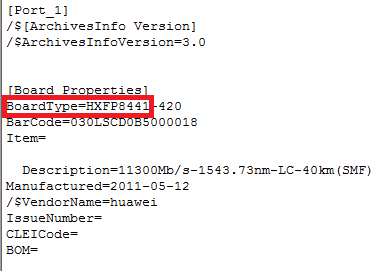
Figure 2
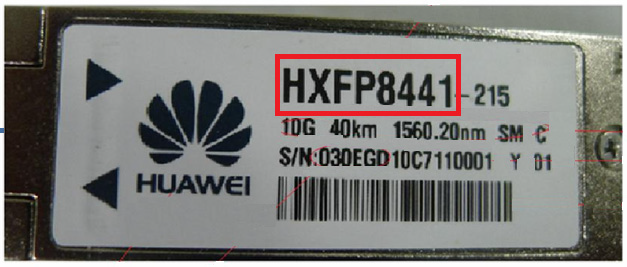
Figure 3
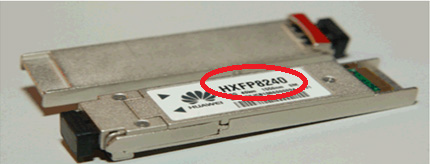
A customer-purchased fiber is used to connect the optical module. The reported receive optical module is over 3 dB lower than the actual optical power. After a fixed optical attenuator (FOA) is connected to the fiber, the reported o0070tical power is normal. For example, the measured actual optical power is –5.1 dBm. After a 2 dB FOA is connected to the fiber, the reported optical power is approximately –7 dBm.
[Root Cause]
According to the YD1272-1 standard, the LC ferrule elasticity and size B are two major indicators to determine the quality of an LC connector. If either indicator does not satisfy requirements, the problem may result.
- The elasticity of the LC ferrule does not satisfy the requirement of 5–6 N and is much smaller than the stress between the receive-end optical device and the ceramic sleeve. Consequently, a gap is generated between the fiber and the end face of the optical device ferrule and excessive insertion loss results. As a result, the reported optical power is much lower than the actual optical power.
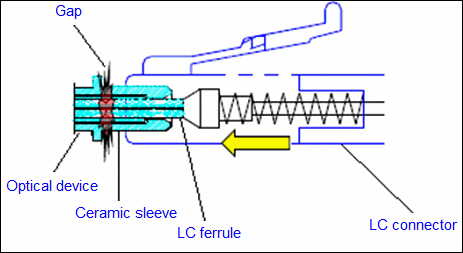
- The LC size B refers to the fiber area inserted to the optical device, which indicates the contact area between the fiber and the optical device. The size B of the customer fiber does not satisfy the requirement and causes excessive insertion loss. As a result, the reported optical power is much lower than the actual optical power.
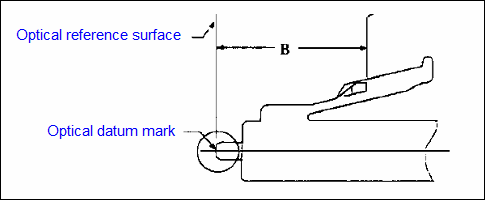
[Impact and Risk]
At the board receive end, the reported optical power is over 3 dB lower than the actual optical power. Sometimes, an IN_POWER_LOW alarm is reported or the receive-end bit error rate (BER) deteriorates.
[Measures and Solutions]
Recovery measures:
- Connect a 0 dB, 2 dB, or 3 dB FOA to the fiber before inserting the fiber to an optical module.
- Replace the fiber jumper.
Workarounds:
None.
Preventive measures:
Replace the customer fibers with fibers that satisfy requirements. The fibers provided by Jonhon, Acon, and Foxconn are recommended. For more huawei transmishuawei-transmission_c1sion equipment, please get through at www.thunder-link.com.


Comments are closed